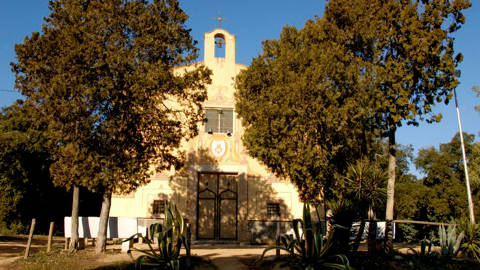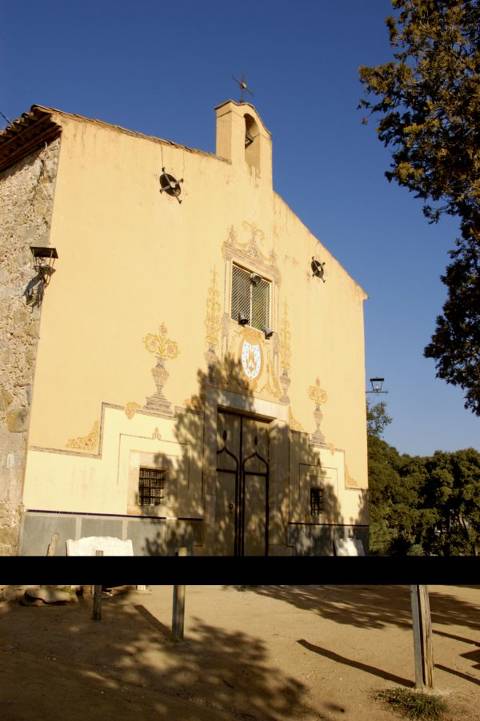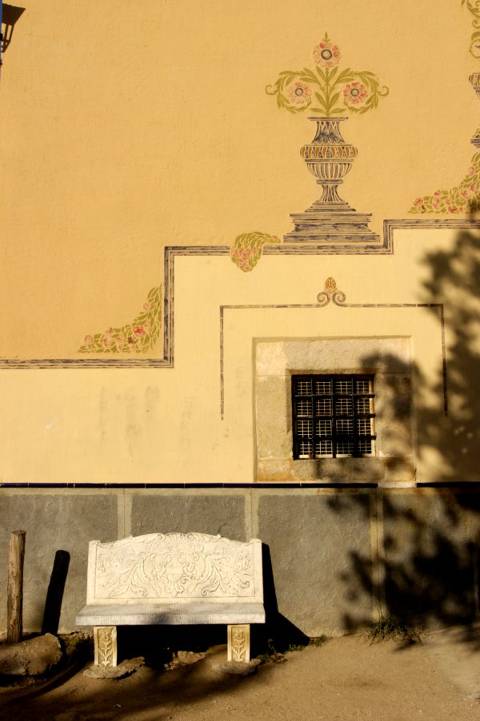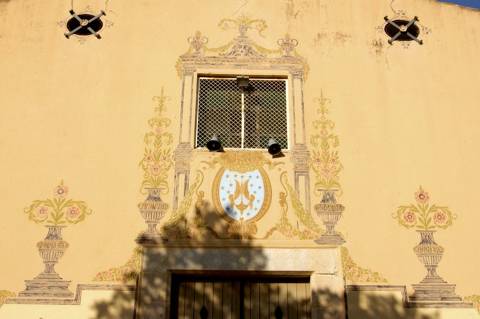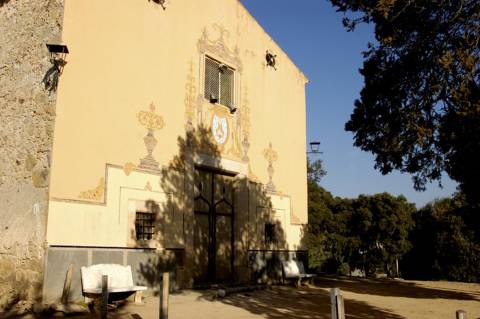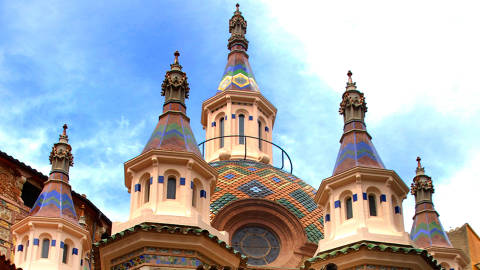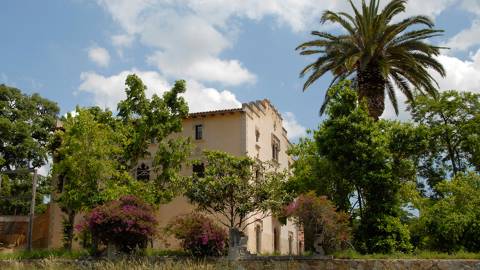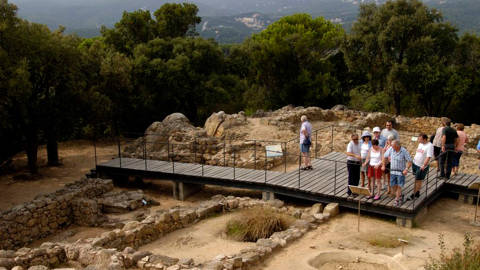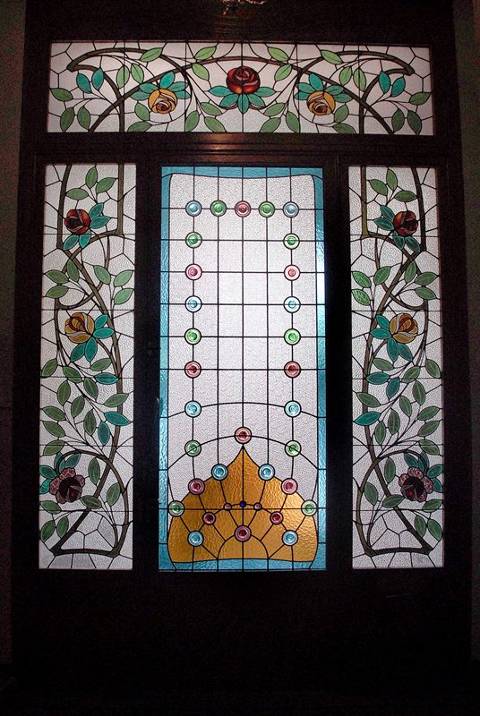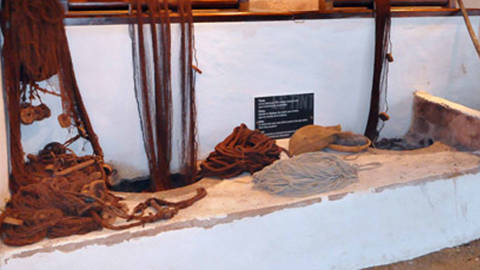
Catalan rural architecture
Chapel of Sant Quirze
The Chapel of Sant Quirze, dating back beyond the 11th century, is a building of great simplicity that obeys the compositional laws of rural Catalan architecture. The origin of the chapel is not known with any certainty. However, documents of the consecration of the old parish church of Sant Romà shows that it existed by 1079.
Chapel of Sant Quirze. The ground plan of the present-day chapel shows two distinct sections: one corresponding to the old mediaeval chapel, which now contains the two sacristies and the main altarpiece area, and one situated on a lower level that today serves as a nave for worshippers. The latter section is the result of an extension completed in the 18th century, in the first part, which left the original entrance uncovered (now walled in) along the south-west facing façade with a voussoired door flanked by windows, one in its original location (also walled in) and an additional one at a higher level, perhaps added later on. In the lower section of this façade, as well as in the others of this ancient section, whose walls are in many cases made of materials of Roman origin, clay was still used as a material for binding stones. The original mediaeval chapel would have measured approximately 4.5 metres wide and 10 metres long. The 18th-century extension gave the building a square layout, with each side measuring approximately 10.5 metres. The sgraffito work on the main façade was made by Adrià Gual in 1935. Remains of Roman ceramics, a coin of Constantine and several tombs have been found in an area very close to the chapel. The finds discovered around this chapel may point to the existence of an early Christian church and an adjoining necropolis. It was set on fire in the 14th century by the Genoese. The Chapel of Sant Quirze is therefore the oldest in Lloret. Indeed, during the consecration of the Chapel of Sant Romà (now the Chapel of Les Alegries), on 8 January 1079, it was referred to as follows: A meridiei parte similiter terminatur in parrochiae Sti. Ioannis in valle marina et sic vadit per ecclessiam Sti. Chirici.

